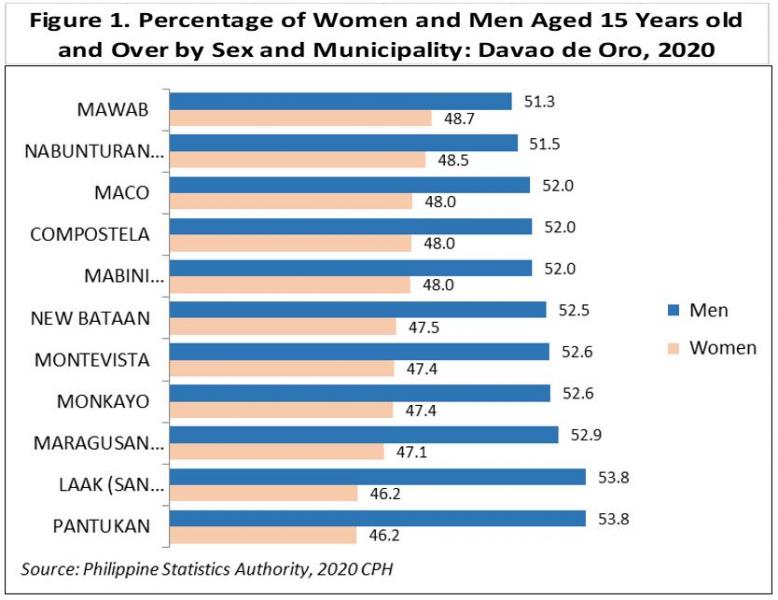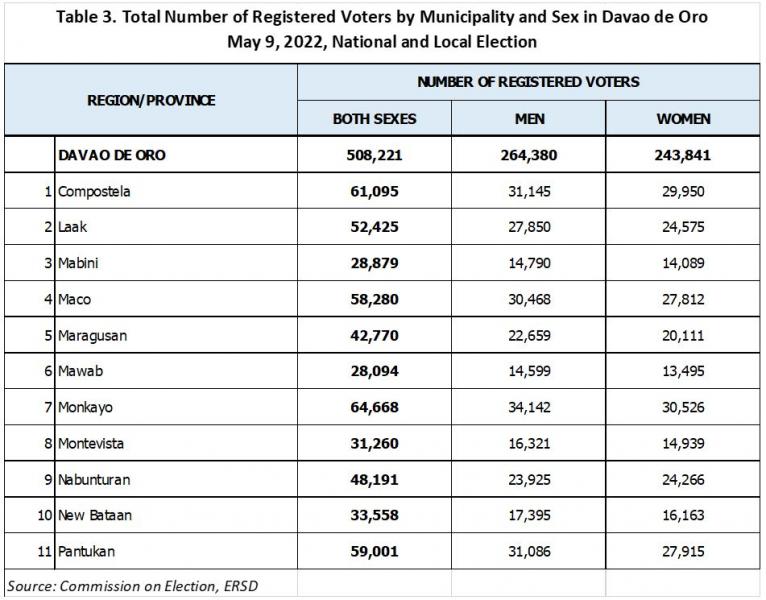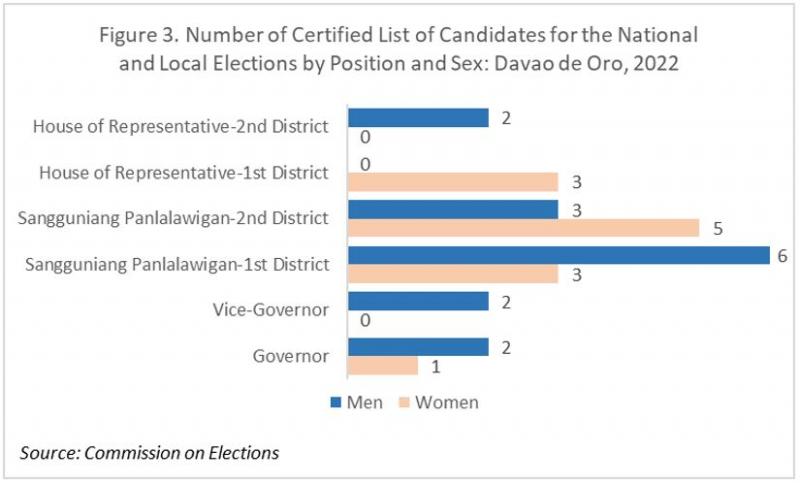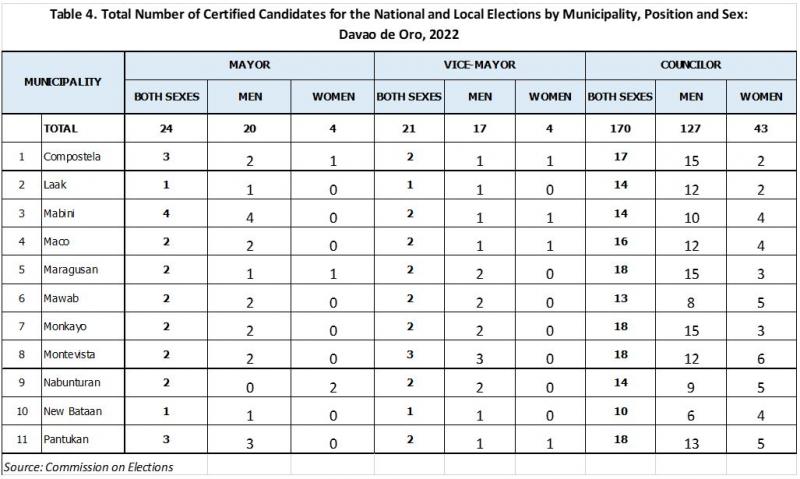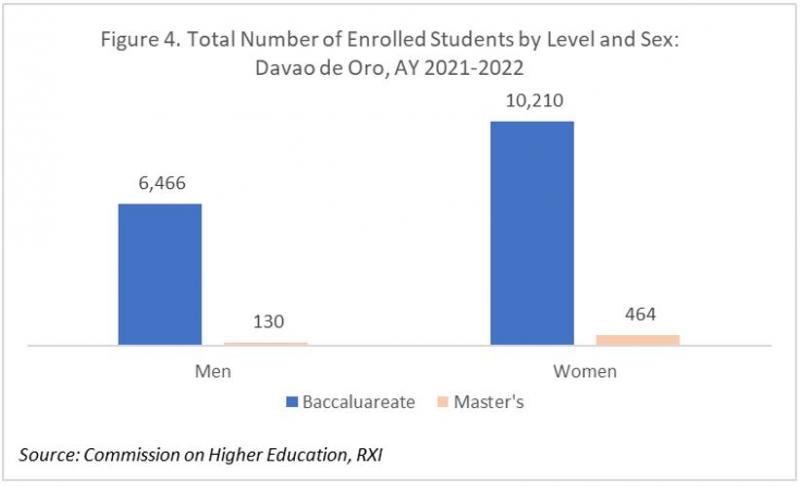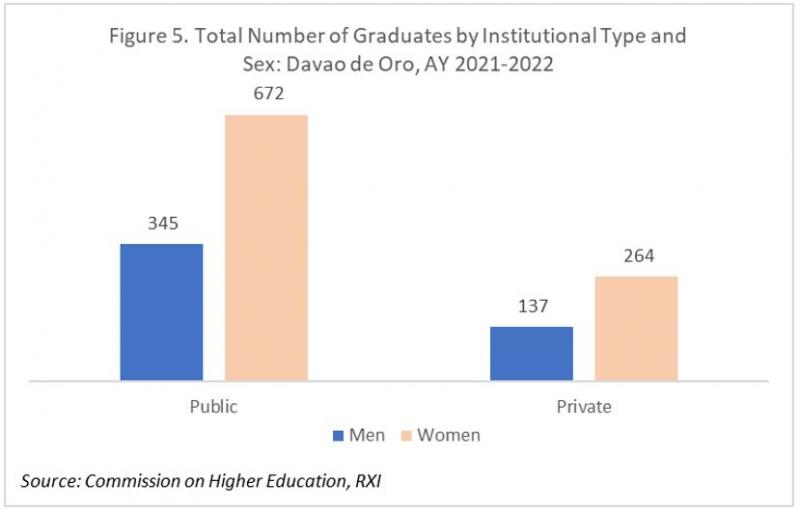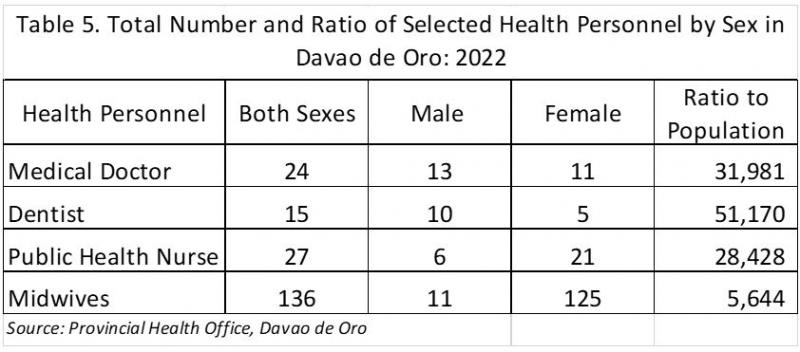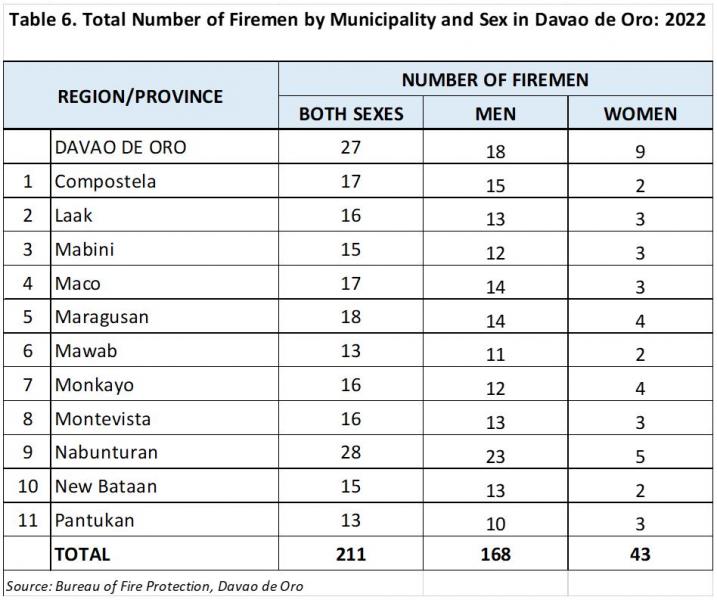Men outnumber women in Davao de Oro by 5 percent
The result of the 2020 Census of Population and Housing (2020 CPH) showed that the total household population of Davao de Oro Province aging 15 years old and above has reached to 520,050 individuals, of which 47.5 percent are women and 52.5 percent are men. This can be translated to a sex ratio of 111 men for every 100 women. Men outnumbered women population from age 15-69 years old. However, women outnumbered the population of men from age 70 years old and over. This reflects that mostly women can live longer than men. The number of youths in Davao de Oro Province aging 15-24 years old in 2020 reached a total of 144,432 comprising 18.8 percent of the province total household population. (see Table 1)
In terms of women and men aged 15 years old and over, Mawab registered the highest percentage of women at 48.7 percent, among the 11 municipalities of the province. On the other hand, Pantukan recorded the lowest population of women at 46.2 percent compared to men at 53.8 percent out of the municipality’s total population aged 15 years old and over. (see Figure 1)
In civil registration, men also dominates in terms of percentage of individuals who were born for the year 2021 at 52.8 percent. Likewise, for the record of death in the same year, men recorded a higher percentage than women at 58.0 percent. (see Table 2)
Men dominates in the number of registered voters
During the National and Local Elections held last May 9, 2022, 264,380 individuals who are registered voters were men, comprising 52.0 percent of the total registered voters. Women are outnumbered at about 4.0 percent. (see Table 3)
Among the 11 municipalities of the province, Nabunturan posted the highest number of women who were registered voters at 50.4 percent of the municipality’s total registered voters. On the other hand, Laak registered the lowest number of women who were registered voters at 46.9 percent compared to men with 53.1 percent of the municipality’s total household population. (see Figure 2)
Based on the certified list of candidates for May 9, 2022 National and Local Elections in Davao de Oro, 179 or 74.0 percent of the candidates are men. For the provincial government positions, 15 or 55.6 percent are men who aspired to be in the position they applied for. (see Figure 3)
For the municipal government positions, an average of 79.7 percent for three positions are accounted for men candidates. 83.3 percent for Municipal Mayor, 81.0 percent for Municipal Vice-Mayor, and 74.7 percent for Municipal Councilor (see Table 4)
2 out of 3 tertiary graduates are women
During the Academic Year 2021-2022 of the province, there were 16,676 students enrolled for all tertiary levels, of which 10,210 students or 61.2 percent are women. Likewise, in masteral degree level, women still dominates in the number of enrollees at about 78.1 percent throughout the province. (see Figure 4)
For the overall number of tertiary graduates both from public and private schools, 936 students or 66.0 percent are women, while the remaining 34.0 percent are men. (see Figure 5)
Among of the tertiary graduates, 71.7 percent graduated in public school, of which 66.1 percent are women out of the total number of graduates from public school. Likewise, in private school, women still dominates in the number of graduates with 65.8 percent contribution out of the total number of students who graduated in the same academic year.
Public Health Nurse dominates by women at 77.7 percent
The total population of Davao de Oro as of May 1, 2020 is 767,547. In relation to medical field services, there are 24 medical doctors in the province, of which 54.2 percent are men. Medical doctor ratio in the province is one doctor is equivalent to 31,981 individuals. Likewise, there are 15 dentist for the whole province, of which 10 dentist or 2 out of 3 dentists are men. Dentist ratio is one dentist is equivalent to 51,170 individuals.
For the public health nurses and midwives, women dominates than men. Women percentage for public health nurse is 77.8 percent, while for the midwives it accounted for 91.9 percent, respectively. (see Table 5)
2 out of 10 firefighters are women
For the year 2022, a total of 90 cases of fire incidents happened in the province of Davao de Oro. Twelve fire stations are in place all throughout the province to cover any fire incidents. There are 211 firefighters available from the 11 municipalities of the province, of which 168 firemen or 79.6 percent are men. (see Table 6)
Technical Notes:
Household population refers to all persons who are members of the household.
Sex is the biological and physiological reality of being a male or female.
Age refers to the interval of time between the person’s date of birth and his/her last birthday prior to the census reference date. It is expressed in completed years or whole number.
Sex ratio is the number of males per one hundred females in a population.
Live Birth is a complete expulsion or extraction from its mother of a product of conception, irrespective of the duration of the pregnancy, which after such separation, breathes or shows any other evidence of life, such as beating of the heart, pulsation of the umbilical cord, or definite movement of voluntary muscles, whether or not the umbilical cord has been cut or the placenta is attached; each product of such a birth is considered liveborn.
Death refers to the permanent disappearance of all evidence of life at any time after live birth has taken place (postnatal cessation of vital function without capability of resuscitation).


